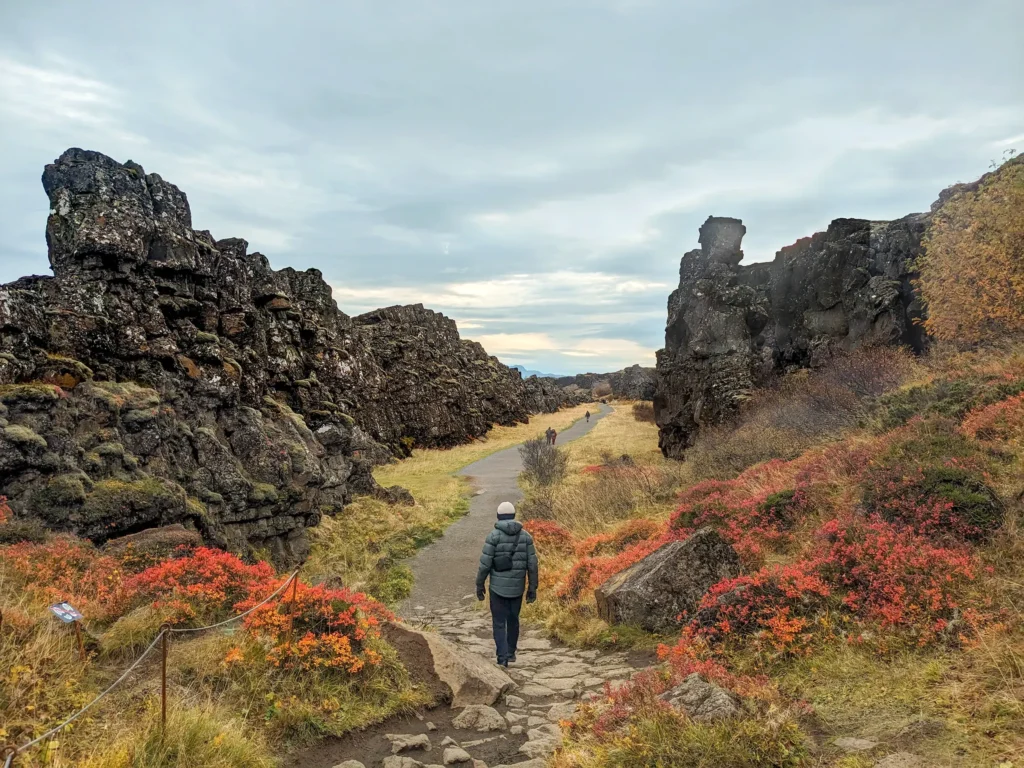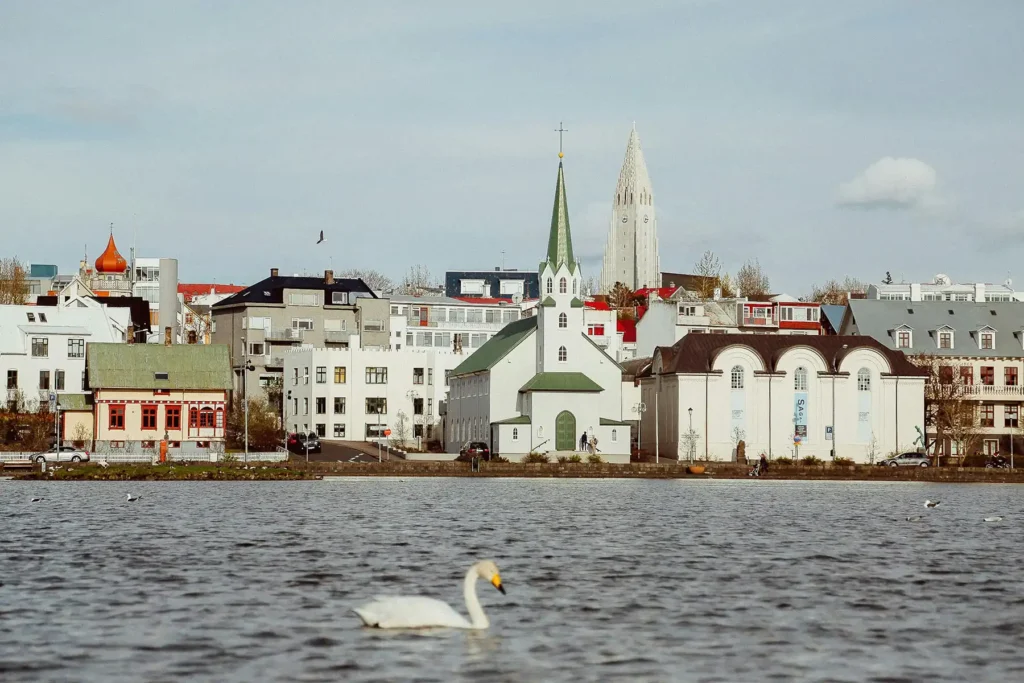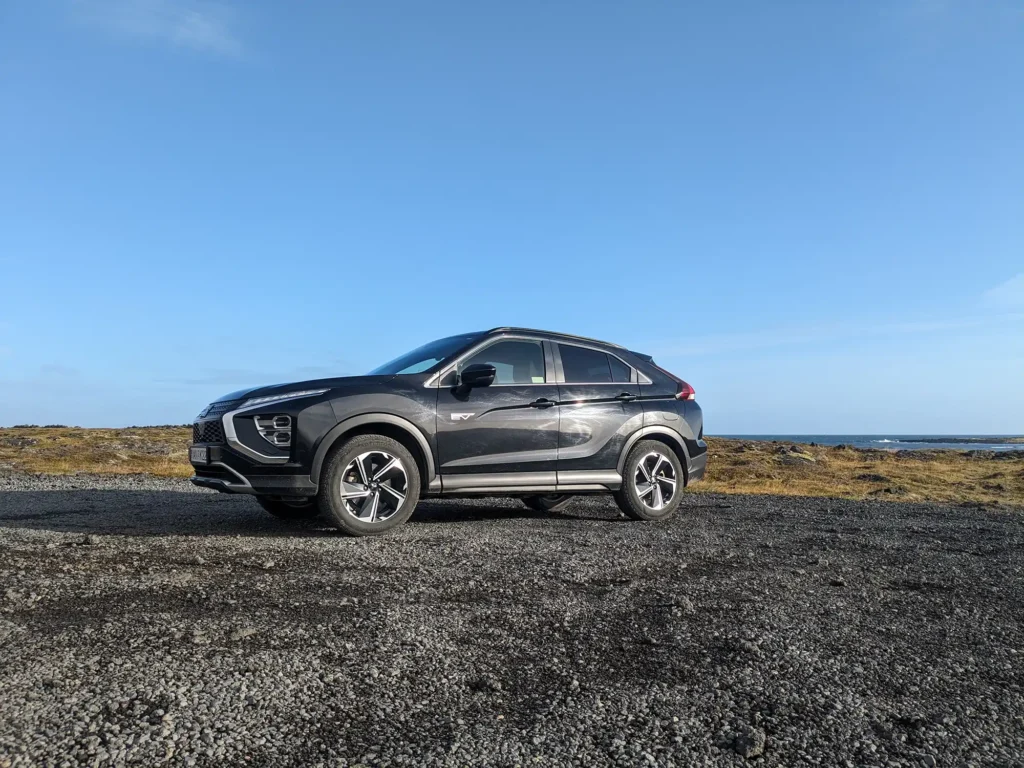Crowds
One of the best things about visiting in October is that it’s a quieter time. Summer and Winter are the peak tourist seasons in Iceland, so visiting in the Fall means fewer crowds, making it easier to snap those perfect waterfall photos.
That said, don’t expect to have the attractions all to yourself. You’ll still run into crowds at popular spots like those along the Golden Circle. But if you can avoid the busiest times (when all the tourist buses arrive), your visit will feel much more relaxed. When we stopped by Seljalandsfoss around 11 am, we found ourselves in a long line to walk behind the waterfall. In comparison, our visit to Skógafoss later in the afternoon, after 4 pm, was a much more peaceful experience. We could take our time, enjoy the view, and even hike the stairs at our own pace – trust me, with 500 steps, we were thankful for the chance to stop and catch our breath a few times!
Fewer crowds also means you’re more likely to find cheaper prices on things like hotels and car rentals – something I’m always happy about.
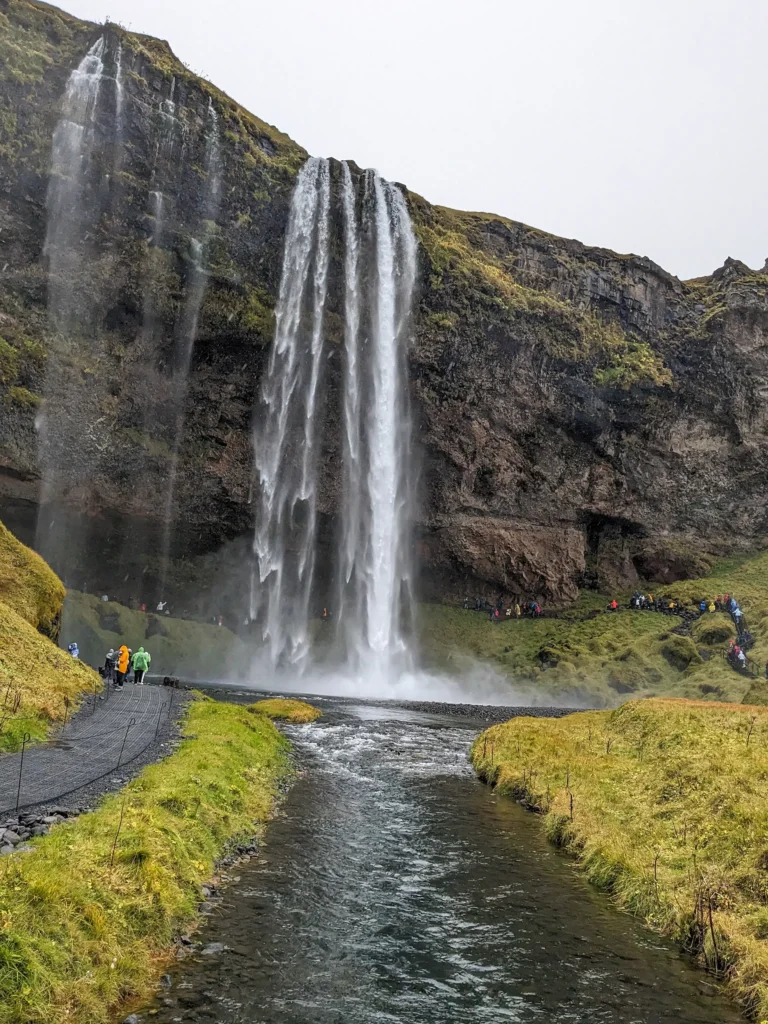
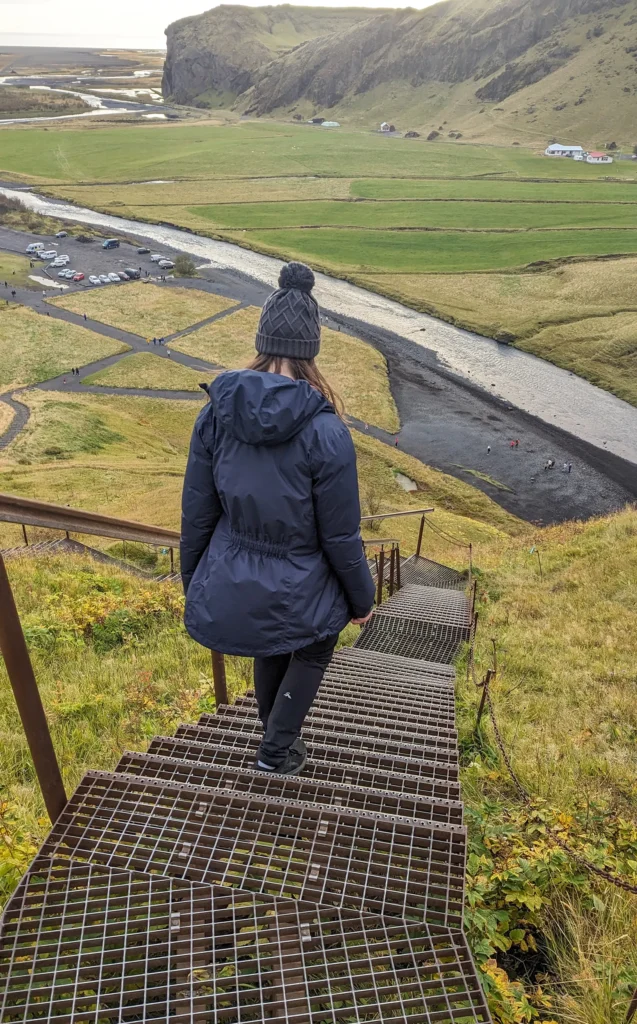
What’s the Weather Like in Iceland in October?
October weather can be unpredictable. One moment, the sun is out, and the next, you’re caught in the rain, battling to keep your balance against the gale-force winds.
Average Temperatures
October marks the beginning of Iceland’s shift from fall to winter with the temperatures starting to drop. The weather will vary from day to day, with temperatures varying slightly between different regions.
Looking at the 2024 averages, Vík starts the month with highs around 6°C (43°F) and lows near 2°C (36°F). By the end of October, the temperatures will drop to highs of 4°C (39°F) and lows of around -1°C (30°F).
In Reykjavík, it’s a bit warmer, with early October averaging a high of 9°C (48°F) and a low of 4°C (39°F). By the end of the month, expect highs closer to 6°C (43°F) and lows around 2°C (36°F).
Rain
One thing you can count on in October is rain. Along with September, it’s usually one of the wettest months of the year. Our trip proved this – there wasn’t a single day we stayed dry, whether from drizzle, mist, or heavy rain.
Wind
Iceland’s position between the Arctic and Atlantic oceans, along with its flat landscape, is what creates the strong winds the country is known for.
One thing to know is that the wind can make it feel much colder than the actual temperature. For example, while it might be 6°C (43°F), the wind can make it feel closer to 2°C (36°F). During one of our trail walks, the wind died down for a bit, and I actually started to overheat and had to unzip a few layers.
If you’re planning to drive, be aware that the wind can also be dangerous. I’ll touch more on this later in this guide.
Snow
If you’re visiting Reykjavik and the southern part of Iceland, you’re unlikely to experience any snow during October; it usually falls just up in the mountains. However, if you’re heading north, you may encounter snow, especially toward the end of the month.
Interestingly, we chatted to someone who had experienced a snowstorm in September, so it just goes to show that you never really know what to expect!
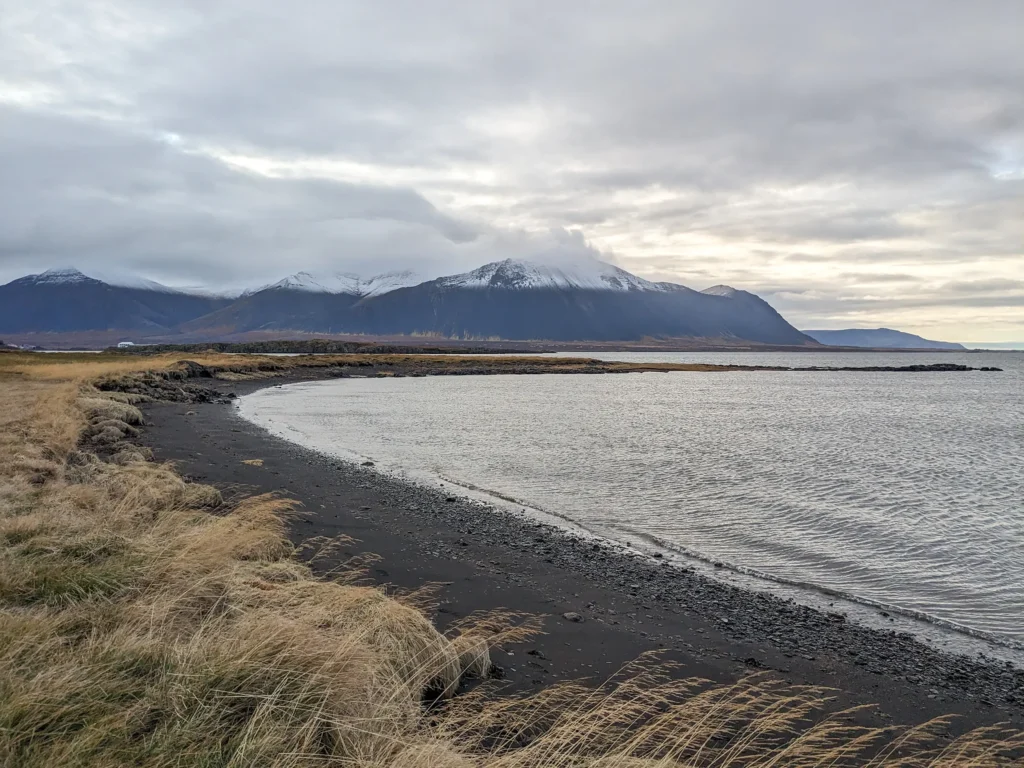
Northern Lights
Iceland’s aurora season runs from September to March, so visiting in October gives you a fantastic chance to see the Northern Lights. With the sun setting around 6 p.m., you’ll have plenty of evening hours to catch the lights if the skies are clear.
While there’s never a guarantee you’ll see the lights (no matter the time of year), planning ahead can increase your chances. Consider spending a few nights in the countryside, away from Reykjavik’s city lights, download an aurora forecast app, or book a Northern Lights tour.
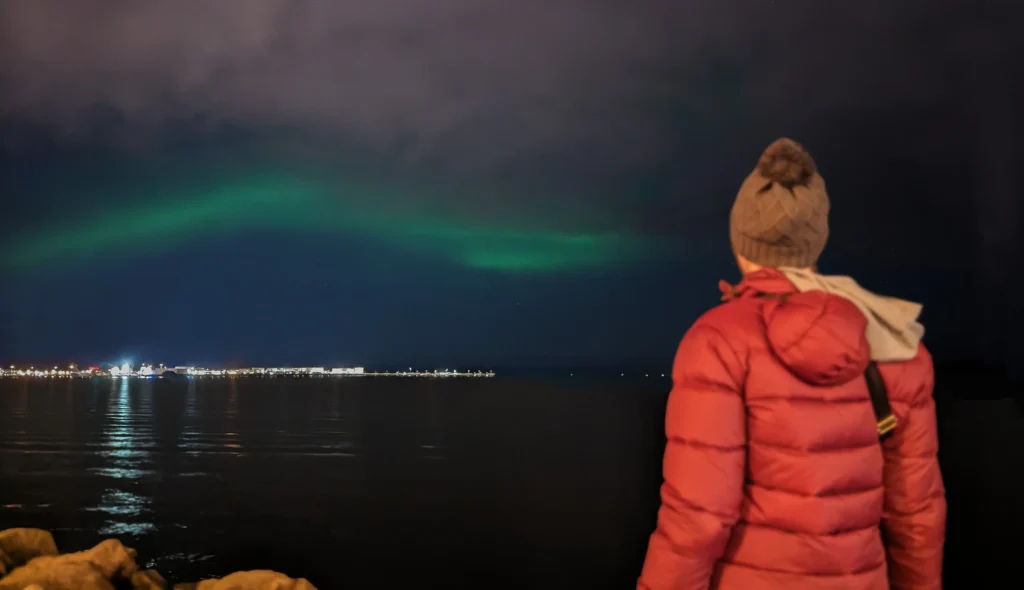
Autumn Colours
While Iceland is often associated with its barren landscapes rather than forests, there are actually trees and ground foliage throughout the country. Some national parks, including Þingvellir (referred as Parliament), put on a beautiful autumn display and there’s something charming about seeing vibrant autumn foliage against black lava fields.
Unfortunately, due to Iceland’s strong winds, you typically have only a brief window to witness this beautiful scenery. The leaves usually start to change colour from early to mid-September, but by mid October, they’re often gone. When we visited Þingvellir National Park on October 2nd, many of the autumn leaves were already fading. I’d guess that by mid-October, they would be mostly gone. If you’re eager for vibrant autumn colors, consider planning your trip earlier, as the spectacle is short-lived. By comparison, a month later in Berlin, we were still surrounded by full autumnal bliss.
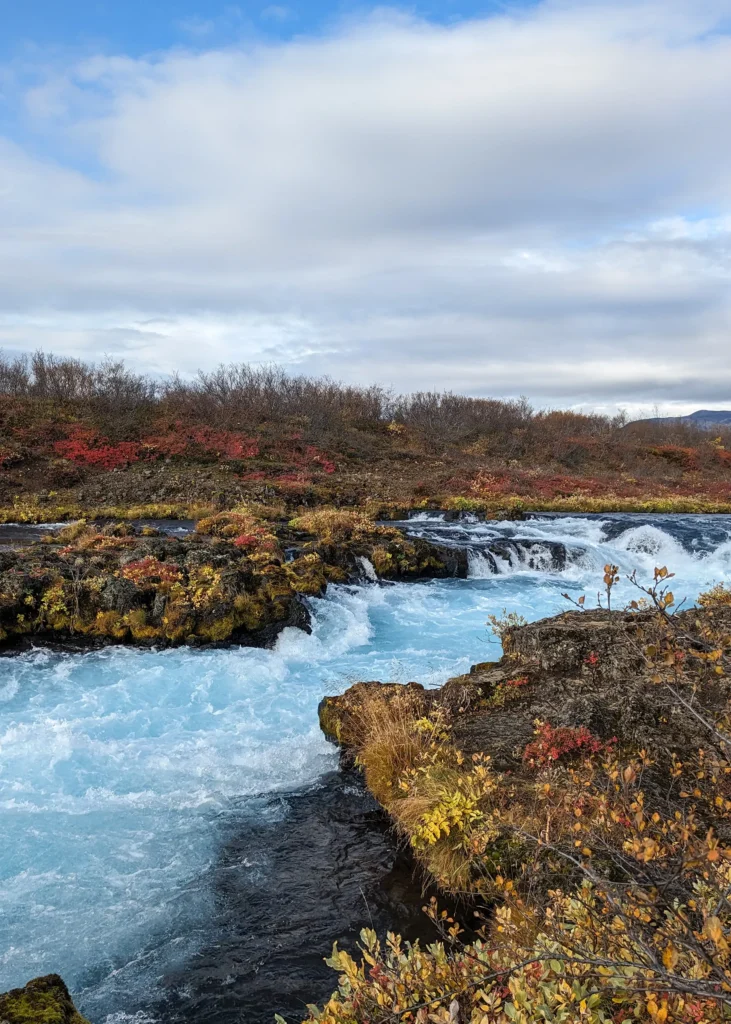
Daylight Hours
Compared to the Midnight Sun, the days are noticeably shorter by October, with the sun rising around 8:30 AM and setting around 6:00 PM. But don’t worry, we still had plenty of daylight to make the most of our days, we found ourselves heading out as early as we could then staying out until dark.
What to Pack for Iceland in October
Layers
Layers are essential for Iceland’s unpredictable weather. They help you adapt to changes throughout the day, and transitioning from being outside in the cold to heading back to your car or into an indoor attraction. Waterproof layers are especially important – trust me, you don’t want to end up in cold, wet clothes. It’s uncomfortable and can also weaken your immune system and no one wants to end up sick.
Most days, I wore a thermal layer, a cotton long-sleeve shirt, and then a down jacket, topped with a hooded rain jacket. On my legs, I had water-resistant pants, and I kept a pair of waterproof rain pants in our day bag that I could slip over in case it started raining.
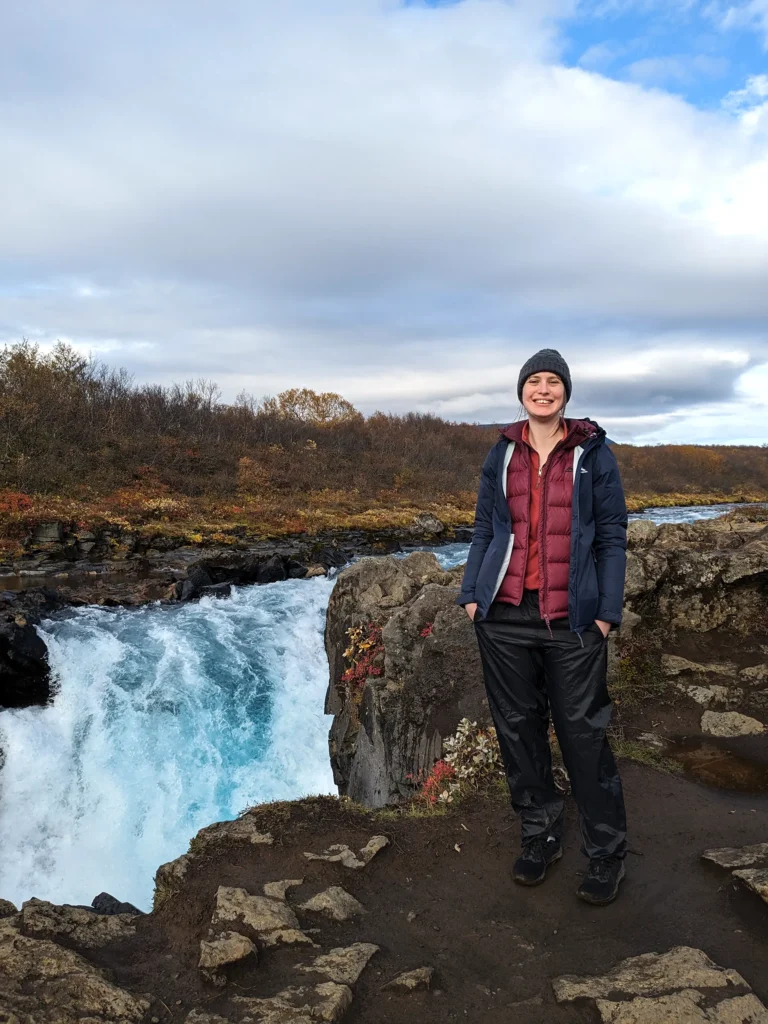
Sturdy shoes
If you’re not planning on doing any hikes you don’t necessarily need hiking shoes during October. But you must have sturdy shoes that have a good grip as the rain can make the paths around attractions slippery.
Something to also consider are shoes with a waterproof material – ours weren’t and if we ever get the chance to return to Iceland that would be something we would invest in. Our feet got wet multiple times and luckily they were mesh so they didn’t take long to dry out but wet feet aren’t a great feeling!
If you’re considering doing a glacier or ice cave tour you will need to have hiking shoes for this, we didn’t but were able to hire pairs for this.
Sunglasses
I don’t usually wear sunglasses unless I’m driving, but I was so glad I brought them to Iceland. When the sun breaks through the clouds, the glare can be really strong, especially if it’s reflecting off the water and ice.
Swimwear
If you’ve been researching Iceland, you’ve probably noticed that visiting a geothermal pool is a must-do. Whether it’s the famous Blue Lagoon or a smaller hot spring, soaking in the warm water is incredibly relaxing, especially in the chilly October air.
There’s no need to pack anything special, just bring the swimwear you feel most comfortable in. You’ll see people wearing everything from t-shirts to shorts over their swimsuits in the water.
Back home in Australia, I never swim outdoors without a rash shirt, but with Iceland’s UV index averaging just 1 in October, you won’t need to worry about sun protection.
Backpack with a waterproof cover
Even if you’re not planning on hiking, having a backpack is super helpful. We carried one in the car every day, and it made it easy to bring snacks, lunch, and other little things. Eating out can be expensive in Iceland, so having snacks on hand means you won’t need to stop and spend extra money if you’re hungry. Also you might find that in certain regions, finding food may not be easy or convenient.
Our backpack wasn’t waterproof, but we brought a waterproof cover just in case it rained heavily. It wrapped up small so we could easily leave it in the bottom of the bag.
Beanie and gloves
The wind in Iceland seems to sneak in everywhere, so you’ll want to keep your entire body protected. You’ll want to pack a beanie, gloves, and a scarf (or neck warmer) to stay cozy. You can also look at some waterproof options if you’re worried about getting wet. Ours weren’t waterproof and we only really ran into trouble one day and had to take them off as soon as we got back to our car. But they easily dried out overnight with our Airbnb heating.
Waterproof phone case
I’ve included this on the list because we didn’t have one, but it would’ve been handy. On our ice cave tour, my phone got wet and eventually shut off, so a waterproof case would’ve saved me some stress.
If you’re planning on taking pictures in places like the Blue Lagoon, a waterproof case is also a great idea. I noticed a lot of people using waterproof cases with lanyards, making it easier to hold their drinks and apply face masks without having to juggle their phones too.
Driving in Iceland during October
Most roads in Iceland remain open during October, including those along popular routes like the Golden Circle and Ring Road. However, the highland roads (F-roads), which are only open during the summer season, begin to close during the month.
As I mentioned earlier, snow is normally only falling at higher elevations, so you likely won’t need to worry about driving in snowy conditions. That said, always check the weather and road conditions on road.is to stay safe.
We hired a Mitsubishi Eclipse Cross, and the only issue we faced was the wind. On two occasions, the wind was so strong it was nearly impossible to open the car doors. This is something you’ll likely be warned about when you rent a car in Iceland as wind damage to door hinges is common – and typically not covered by insurance. To help prevent any damage, be sure to use both hands when opening the door: one on the handle and one on the frame, and don’t let go until it’s fully closed. If you can, try to park facing into the wind, so if the wind does grab the door, it’ll just slam shut rather than damaging it.
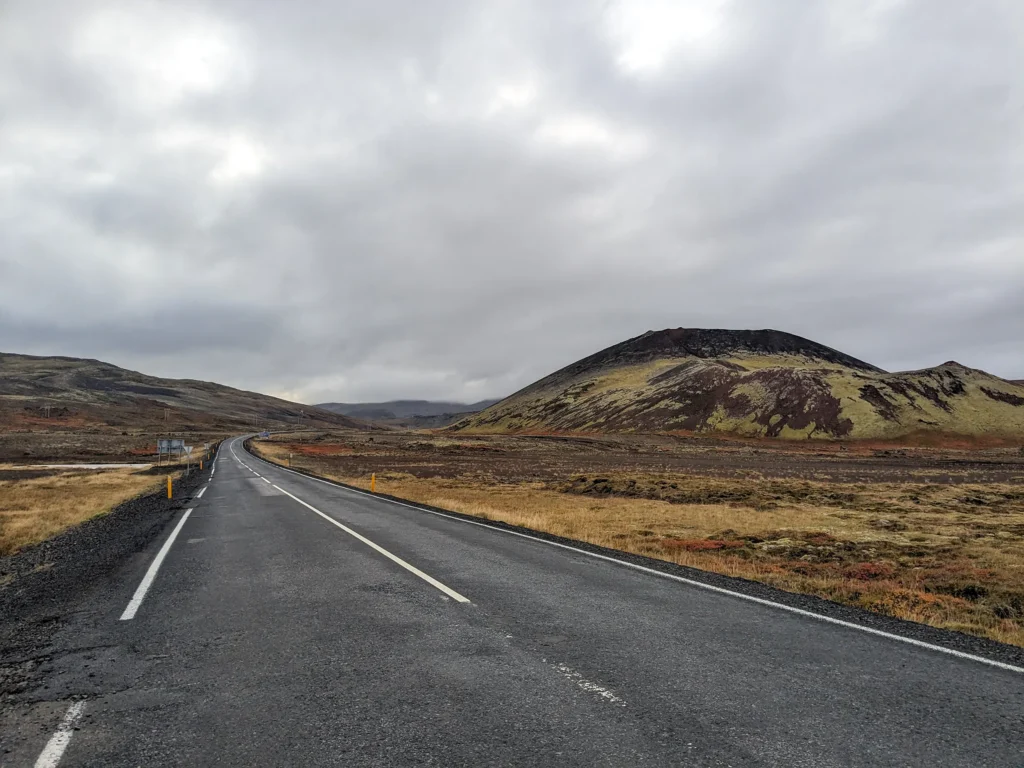
Should You Visit Iceland in October?
Absolutely. October is a great time to visit if you’re wanting to avoid the crowds. You’ll be treated to the beautiful autumn foliage, and there’s a chance to spot the Northern Lights.
Just pack plenty of layers and waterproof gear, and you’re sure to have a great trip!
